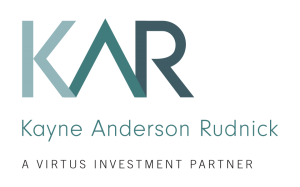KAR portfolio manager Jon Christensen discusses why high-quality and active management are important when it comes to investing in small-cap stocks.
Transcript
JILL MALANDRINO: Welcome to Nasdaq TradeTalks. I'm Jill Malandrino, global markets reporter at Nasdaq. Joining us for the segment, we have Jon Christensen, portfolio manager at Kayne Anderson Rudnick. He joins me to discuss why active management and high quality matters with small-cap investing. Jon, it's great to have you with us. Welcome to TradeTalks.
JON CHRISTENSEN: Thanks, Jill. It's great to be here.
JILL MALANDRINO: All right, you got it. Explain to us why active management and high-quality matters when it comes to small caps. It's not something you can just index to and set it and forget it.
JON CHRISTENSEN: No, that's and that's the $64,000 question, right? A lot of people think they could just do indexing with small caps. You really can't. When you think about the universe of small caps, t is a much larger and investable universe. However, what you also need to focus on, we are stock pickers, so we also try to focus on those companies that don't have as much analyst coverage. So, we think about the NVIDIA’s of the world that have maybe 30 different sell-side firms covering it, a lot of our companies typically have maybe, you know, two or three names or none at all even following on Wall Street. So, we think that is where active management can really lead to superior returns by finding kind of those, you know, those hidden gems, so to speak, that hopefully one day start as small caps, but then long term, hopefully turn into one of the Magnificent Seven.
JILL MALANDRINO: Right, so what type of characteristics are you looking for within a small-cap company? I would imagine quality of the balance sheet is certainly going to be one of them.
JON CHRISTENSEN: Absolutely. And, you know, quality is one of those things that's kind of thrown out there, right? Everyone says they buy quality. Our version of quality is really a business characteristic. We wanna find companies that can grow, protect, and nurture a market over long and multiple economic cycles. It's great to find a company that does well during good times. We want to find a company that does well during difficult times. That kind of hangs in there, right? And hold on to those for long periods of time. These are usually companies that have that competitive moat, right? Whether it be through a strong brand, through a network effect, route density. These are usually companies with low capital intensity, high free cash flow, and less debt on the balance sheet. So that helps you in high interest rate environments such as what we're going through right now.
JILL MALANDRINO: Are there specific sectors that you gravitate towards or are you relatively agnostic towards that?
JON CHRISTENSEN: No, good question. When you think about how I just described how we invest, we are sector agnostic. However, there are gonna be certain sectors where we probably won't participate in as much. You think about it, maybe energy, utilities, maybe some biotechs, not as much in banks, maybe a little bit, but not as much. Think about those types of sectors. They're usually capital intensive, they're tied to commodities, et cetera. So for us, we, we're okay not playing in that. We're not gonna just go—again, this goes back to active investing—we're not gonna go where the index says, oh, you need a certain amount of energy or a certain amount of utilities. We are gonna go find the highest quality names in small cap, again without sacrificing who we are as investors.
JILL MALANDRINO: And this brings me to the next question. Should we get a lower interest rate environment—and to your point earlier, small caps tend to be more sensitive to higher interest rates—is that just, you know, a magic wand that's switched, and all of a sudden the indexes are going to start to do well, or do you still have to really think about active management despite the macro environment that is more favorable for small caps?
JON CHRISTENSEN: Absolutely. Yeah. So, I think that's a good point because I think you have to distinguish between the two, right? Because there is no magic wand. We are bottom-up investors. We are looking for the businesses to do well at first. And that's really what we care about. Yes, the lower interest rate environment does impact small caps. Remember, not all of them are created equal. It really comes down to the quality of the earnings. How, even in a high interest rate environment, low interest rate environment, how do these companies perform, again, during these good and bad times? Do they have pricing power? Do they have a cost structure that allows them to take out costs during difficult times to retain profitability? That's really the keys. In the end, earnings and financials win out over everything else. So that's why in the end, you can try to play the macro, which I think is a difficult play to do, but we focus on the businesses itself.
JILL MALANDRINO: All right, I appreciate the insight as always, Jon. Thanks for joining us on TradeTalks. I'm Jill Malandrino Global Markets reporter at Nasdaq.
JON CHRISTENSEN: Thanks, Jill.
These comments are the opinion of Kayne Anderson Rudnick. This material has been prepared using sources of information generally believed to be reliable; however, its accuracy is not guaranteed. Opinions represented are subject to change and should not be considered investment advice or an offer of securities. Please consult your financial professional for investment advice.
Past performance is no guarantee of future results.
All investments carry a certain degree of risk, including possible loss of principal.
3520898
